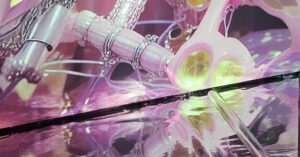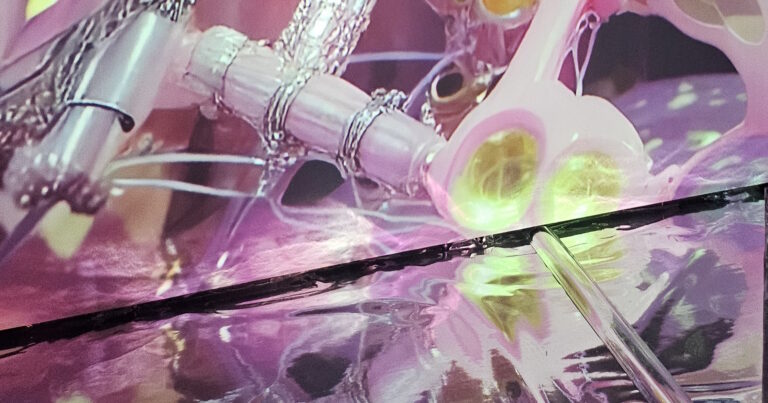In Egypt, concepts that might in other cultures belong to the realm of ab- stract philosophy were expressed by symbols, images, and, to a lesser extent, myths.
Geraldine Pinch, Egyptian Mythology: A Guide to the Gods, Goddesses, and Traditions of Ancient Egypt (2002)
While I was at the Aswan airport, waiting to catch my plane and return from my journey, I entered a local bookstore and grabbed a rather peculiar book. It stroke me as a book on the symbolic thought in Egypt and, possibly influenced by some philosophical discussions I had with my sommelier friend during our vacation, I decided to read it during the brief journey from Aswan to Cairo.
The book is this, and my review on Goodreads should give you a proper idea of what I got myself into.
 Symbol and the Symbolic: Ancient Egypt, Science, and the Evolution of Consciousness by R.A. Schwaller de Lubicz
Symbol and the Symbolic: Ancient Egypt, Science, and the Evolution of Consciousness by R.A. Schwaller de Lubicz
My rating: 2 of 5 stars
You should know what you’re getting yourself into (which I didn’t): this is a booklet of pseudoarchaeology which mixes esotericism, philosophy and mysticism. Many of the proposed “facts” about ancient Egypt are to be double-checked through more reliable sources and, though fascinating, lots of them are quite a stretch from credited theories.
Though fascinating, these speculations are far from being harmless and lead to stuff like Theosophy.
Still, I give it two stars instead of one because a couple of concepts might be of interest also to rational people who prefer archaeology over mysticism, particularly the idea of a centripetal vs centrifugal mind process when it comes to processing symbols.
A text to be handled with care.
As I mentioned above, the text is written by a guy who spent too much time in the sun studying the Luxor Temple: though his mapping work is generally considered to be of high value to archaeologists, he was a member of the Theosophical Society and a member of esoteric right-wing groups, not a stranger to antisemitism, and a convinced mystic. In one word: an asshole and a charlatan. Okay, they were five words.
Why am I talking about this booklet, you ask? Well, because if I tell you the two interesting concepts I found in it, you won’t have to buy it.
When an image, a collection of letters, a word or a phrase, a gesture, a single sound, a musical harmony or melogy have a significance through evocation, we are dealing with a symbol.
Centripetal vs Centrifugal mind process
It’s significant that one of the most interesting concepts of the booklet isn’t expressed by the author but in the translator’s preface, penned by one Robert Lawlor who doesn’t seem to be any less of a charlatan.
With our present form of writing we use groups of arbitrarily formed abstract symbols (our alphabetical letters) which convey memorized sounds and visual associations. We are trained to thnk and communicate through these alphabetical letters — placed in certain (again, memorized) groupings or words — by reducing these abstract conventions into objective images in our minds. Simply stated, this means that when we read cat, we immediately register the formed image: ≽^•⩊•^≼
Now, the idea that everyone forms pictures in their minds is fairly outdated: the forming of a mental image is not a datum and can span from being completely absent (a phenomenon called aphantasia) to a high-resolution, almost photographic recreation (called hyperphantasia).
People usually rest in between: a somehow foggy mental image is evoked by words and appears in the mind of the reader. Even if there is no picture, something happens. That’s what we need to bring home from this.
This habitual reduction from a nonobjective mental abstraction to a delimited image can be seen as an initially centripetal action, which, subsequently, disperses perception and knowledge into a classification of disconnected facts.
Basically, he’s saying that when you read the word “cat” you form an idea that rarely is a specific cat but mostly likely distils mentally into a specific picture all the cats you have seen in your life. You have your own Platonic idea of cat, in a way, and you might be able to describe some of the characteristics of the first thing that comes to your mind when you say “cat”. Mine is long-haired and grey, for instance.
[…] hieroglyphic writing works in the opposite or centrifugal direction. The image, the form, is there concretely before us, and it can thus expand, evoking within the […] viewer a whole complex of abstract, intuitive notions or states of being — qualities, associations and relationships […].
Trying to cut through the bullshit about inner beings and states of consciousness, what this guy is saying isn’t that far-stretched: a written language that works with abstract symbols such as ours, requires the mind to put symbols together and create a picture. If the picture is already given, the reader has to work out whether it’s a phonogram (red as a sound like our letters, as it often happened with non-determinative hieroglyphic signs), as a logogram (which is to say a written character that has a whole word in it), or as an ideogram. Ideograms in particular and logograms, particularly when the symbols were readable stylizations of objects, force the mind to a different kind of work.
The analytical mode first reduces abstraction to a defined image, followed by a proliferation of disconnected facts.
The analogical mode, on the other hand, first expands from the image into far-reaching associations, the inwardly unifies.
Saying it in another way, the hieroglyphic language might be seen as richer than ours, at least up to the point that each whatevergram can be used to create in the reader broader connections with more concepts than one, as we’re doing when we use word tricks and rhetoric. In this, the hieroglyphic language seems more akin to poetry.
The symbol is a material representation of immaterial qualities and functions. It is an objectification of things subjective in us and subliminal in nature.
No shit, Sherlock.
The Symbol as Synthesis
To better understand what does this mean, the author drags Kant out from his grave and who am I not to follow?
By synthesis, in the most general sense of the term, I mean the act of adding different representations to one another and of comprehending their multiplicity in one cognition.
Following up on this, and trying to leave out of the discourse his attack on science and the rational mind that doesn’t interest us, the author proceeds to define three kinds of synthesis and three kinds of symbols:
- the vital synthesis — which is the natural symbol and its expression (tangible form, characteristic word or sound, and colour) — is the pure symbol;
- the action of synthesis, which represents the pseudo-symbol (such as the word, the vocable), replacing the image and determining the concept;
- the synthesizing effect of thought, or psychological synthesis, which represents the para-symbol, through the conventional symbol summarizing a thought.
It is well known that the scarab was associated by the Egyptian to the Sun because of their habit of rolling around a ball of shit. No surprise in that. If we try to follow this reasoning, the actual scarab is the pure symbol: we might see one while wandering through the desert and immediately think of the sun, of creation, of the supreme god and so on. The pseudo-symbol which replaces the image is the word for scarab, Khepri, which also means “to develop”, and associates to the scarab one of the many aspects connected with what it actually means. The thought puts everything together: the actual scarab, the meaning encapsulated in its name and unwraps the whole thing in the centrifugal movement that, according to the author, eventually might lead to a deeper, more centred reflection of what it cosmically means to carry around a ball of shit.
A different perspective on animal worship
This concept appears a couple of times, one in the introduction and one in the proper booklet. The idea is that the symbolic thought doesn’t stop to the hieroglyphic writing, but extends to the way deities were imagined and represented. The given example is the one of Anubis, the jackal.
[it] was not a worship of the animal itself, but a consecration made to the vital function which any animal particularly incarnates, […] used to support and clarify an essential function of nature. The Egyptian saw the jackal as incarnating certain characteristics, functions and processes of […] nature. The jackal is an animal which tears the flesh of its prey into pieces, which it buries and does not eat until they rot.
Note: he doesn’t. He sometimes buries meat to hide it from other predators, as a stash, and is fortunate enough to live in the desert so basically he’s a fan of jerky. That’s all.
From this real, observed behavior, it becomes a symbol for both a metaphysical and physical process: digestion. […] “What would be poisonous for almost all other creatures in him becomes an element of life through a transformation of elements which are bringing about this decomposition”.
It’s a fancy way of saying that the Egyptians observed the jackal was a carrion eater.
Anubis is always pictured leading the soul of the deceased into the first stages of the lower realms of the dwat […]. The urn holding the intestines had a jackal drawn on it. […]
The jackal is also the symbol of judgment […] because, in eating, it performs a precise, innate discrimination, separating out the elements capable of transformation and future evolution from the elements that are untransmutable within their present cycle.
Digestion is a destructive process: it is an analysis a break-down of material forms into the constituents elements.
This guy might be onto something, here, though the concept is expressed in such a pompous way that it might be drowned in the bullshit.
Scientists have observed that the jackal has a striking preference for viscera, even when fresh meat is available. This surely didn’t escape ancient Egyptians, when they decided to connect this animal with the dead and the process of mummification: a corpse without its viscera has more chances of preserving correctly in the heat of the desert. That’s why they started removing organs. The idea that judgment is also connected with the jackal’s dietary habits is fascinating enough.














No Comments